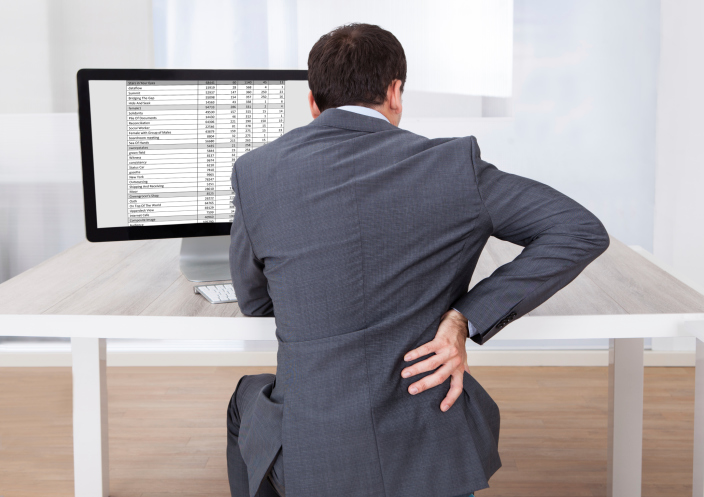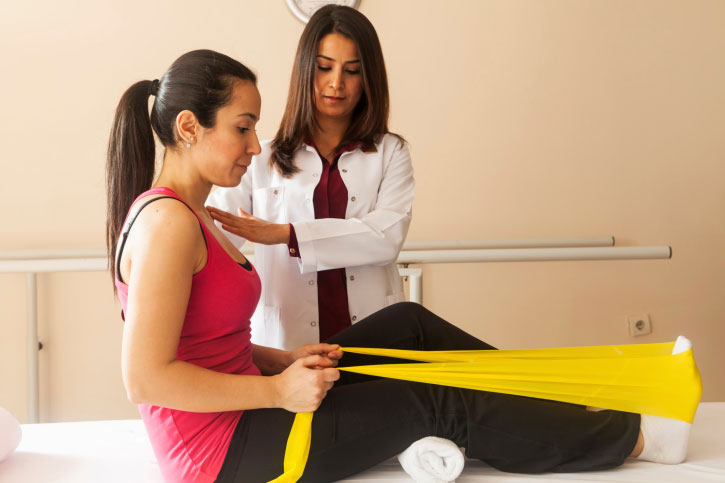We all know we’re supposed to stretch before and after we work out. But could stretching be the most important part of exercise?
By Elena Schmidt PHOTOGRAPHY by Adam Pass; HAIR & MAKEUP suzanny cardoso; MODEL alliette chignoli
Thirty years ago, Renie Leone purchased an instructional guide to stretching, and practiced its “reach and hold” tactic to stay active and prevent injury on the golf course. Despite her best efforts, age impacted her dexterity and range, and eventually brought her beloved golf swing to an unimaginable low. “I’ve been a club champ at every club I belonged to,” says Leone. “But then I lost my swing.” In 2008, she was introduced to personal trainer
Jorden Gold, founder of Stretch Zone. Leone booked an appointment. “I one-hundred-percent credit Jorden with my ability to play,” says Leone—who went on to become the West Boca Club golf champion. “There’s no question about it. His method slows the aging process down.”
Gold, who holds a degree in biology and exercise physiology, had watched his grandfather—his personal hero—deteriorate to the point of needing a cane. He developed an innovative stretch program in which he worked his grandfather’s muscles daily, until “Pop Pop” left his walker behind and was able to dance once again. “By working with his central nervous system and implementing dynamic stretching, I stretched back his years,” says Gold. He later patented the Stretch Zone (SZ) method and began teaching it to massage therapists, trainers, physical therapists, and chiropractors to help fight the effects of age and inactivity.
Over time, our bodies become dehydrated and our muscle fibers are replaced with collagenous fibers, which cause stiffness. Along with rigid joints, muscles fall into disuse as we age—meaning that opposing muscles have to work twice as hard to compensate. They stop working properly, and bodies feel heavier to carry around, leading to inactivity that cripples us.


Americans sit for an average of 56 hours a week—half the waking day. The “sitting disease,” as researchers affectionately call it, shortens and skews the shape of the muscles we rely on to stand up, walk straight, and hold up our neck. “It’s happening with teenagers, because they’ve stopped moving,” says Ann Frederick, founder of Stretch to Win. “It happens to people who are stuck in front of desks and commuting all day.” Nearly nine out of ten people will experience back pain at some point in life, and Americans spend over 100 billion dollars each year on medical bills, disability, and lost productivity due to this pain.
Frederick, who spent years as a dancer, was approached by a trainer from Arizona State University in 1997. She came on board at the school to bring flexibility training to their athletic program, and joined the master’s program before she perfected her method. “There was a gaping hole in wellness, all the way through to athletics,” says Frederick.
The truth became glaring when Frederick’s focus attracted press attention. “I found out that many real people needed help,” Frederick says. “I was astounded by how rampant the lack of flexibility is.” She went on to develop a training program based on her patented Facial Stretch Therapy (FST) method, and began certifying wellness experts from all over the world.
Proper Stretching
Some experts hold the opinion that we are thinking about flexibility all wrong. People assume that the static reach-and-hold method is just what our muscles, joints, ligaments, and tendons need to improve elasticity and increase muscle length. The latest research indicates that this is far from the best approach. “Some studies show that elasticity gains only last for fifteen minutes following the stretch,” says Jon Schriner, DO, Medical Director of Michigan Center for Athletic Medicine. After 15 minutes, the temporary elastic improvement boomerangs back to baseline.


Muscle length does not actually change despite what the word “stretch” implies. A muscle lengthens as it stretches, but at the same time its opposing muscle shortens. When that stretch is released, both muscles move back to equilibrium.
According to Gold, people think that feeling a burn means they are getting a good stretch, but in truth it means that they are getting a good strain. Gold describes the strained muscle as a car seatbelt. “If you pull too quickly, it locks,” he says. “If you continue to force it, you’re just stretching the material itself—that’s what it means to micro-strain a muscle. But if you were to pull your car seatbelt nicely and smoothly, it will come out much farther.”
Gold insists that people should think of stretching neurologically rather than physically. Instead of pulling our limbs to the point of soreness, the SZ method manipulates the “stretch reflex” to unlock the body’s functional flexibility. This reflex is our body’s nervous defense against the dangers of overstretching. “Any movement that goes too far or too fast or is held for too long, past that current range of motion, your body will resist with the stretch reflex,” says Gold.
According to Mark Kovacs, founder of the International Tennis Performer Association and author of Dynamic Stretching, the main benefit of practitioner-assisted stretching is the ability to control the timing of that reflex. “The stretch reflex kicks in immediately,” says Kovacs. “If you alter the timing of it, you can overcome the reflex. Usually this is possible only with a practitioner.”


Stretch Therapy Exercises
At Stretch Zone, practitioners lock you in using adjustable straps. These comfortable bands stabilize the client, allowing for mind, body, and muscle relaxation. “We almost go to that little kick that the muscle gives, then we move back out, and then we move back in,” says Gold. “If you do that repetitively, you can keep going a little further and further without the stretch reflex firing.”
The work of experts such as Gold are removing the Herculean effort from simple movements—things like grabbing a can from a shelf, turning one’s neck around while backing up a car, or reaching into one’s back pocket. “People do not stretch, but then they try to go out and do weekend competitions because they want to do something, and then they don’t have the mobility to do it,” says Frederick. “It’s an ongoing challenge.”
Assisted stretch therapy is a smart solution as our society faces an unprecedented challenge: More people are growing older and increasingly less active. “These stretches are like a dance with a really good lead,” says Gold. “You can be led without knowing how to dance. You just flow with it.” The approach is a gentle reminder that no matter how fatigued or tight we may feel, our muscles can live again. In other words: It ain’t over ’til it’s over. l










